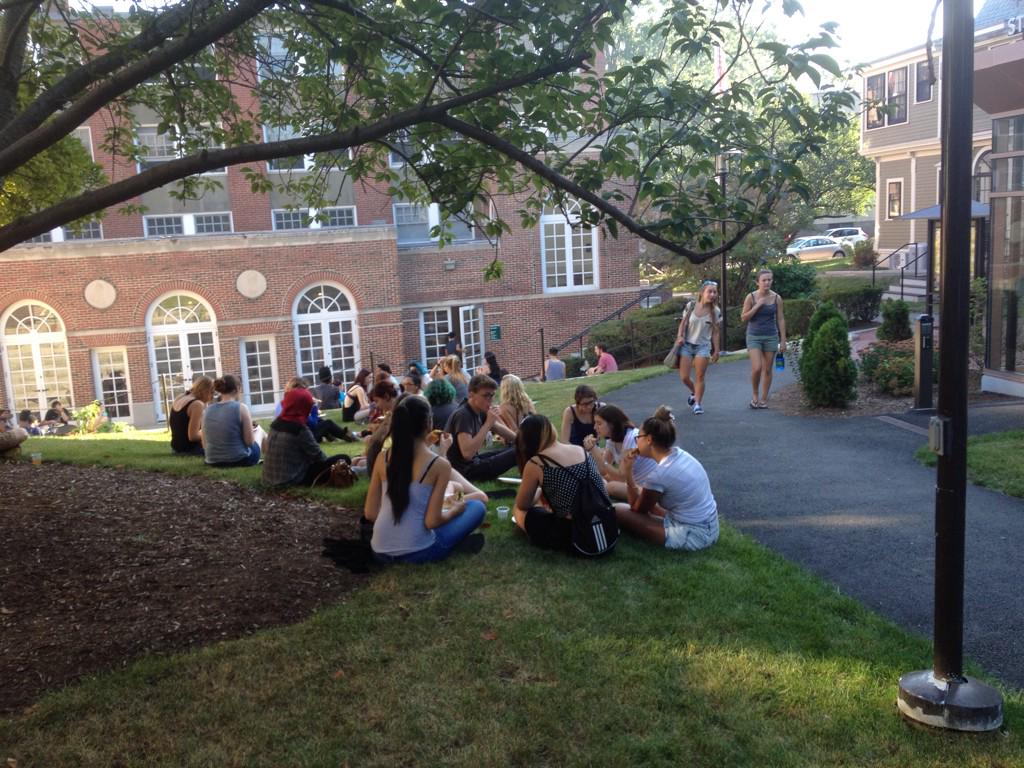Like most university faculty in the world of the #CovidCampus, the Massachusetts Medievalist has been scrapping together the end of the semester in the virtual world, flustered and headachy and anxious. Also like most faculty, I miss my students — we humans are social animals, and “interaction” in the Learning Management System is functional but not nearly as satisfying, intellectually or emotionally.
Last week, I had planned to walk with my seniors through the “Handmaid’s Tour,” a walking tour of Margaret Atwood’s Gilead described in her 1985 Handmaid’s Tale. Set in a dystopian version of Harvard Square and its environs, HT takes place in an evangelical, quasi-fundamentalist patriarchy that is frighteningly recognizable. The novel’s setting hits close to home quite literally for Lesley University, as our campus borders that of Harvard, where the Sons of Jacob and Gilead emerge to take power and conscript the few still-fertile women to reproduce for the regime.
The Boston Book Blog‘s Jessica A. Kent laid out the route of a Handmaid’s tour of Harvard Square; I had planned to merely crib from (but also cite!) Kent’s work to walk out of Lesley’s library, down Brattle St., into Harvard Square, and then into Harvard Yard to see versions of the places where HT characters shop, reminisce, and participate in public executions. As Kent notes, “Atwood didn’t create a fantasy world for her novel” – instead, she built upon what is already here.
One Lesley-specific item that I want to add to Kent’s tour: I think Offred/June and Moira went to Lesley. The whole novel is very local; we get the sense that Offred has lived in the Boston/Cambridge area her entire life. Offred/June didn’t go to Harvard – that’s where the Gilead regime was hatched; all the Commanders are Harvard-connected; she doesn’t have enough insider access or prestige to have been a Harvard student. Offred worked at one of the Harvard libraries in her second (and final) job after college: “It was in a library, not the big one with Death and Victory, a smaller one” (173). Maybe she worked at Lamont or the Houghton? Her scattered, fleeting references to the Harvard libraries are those of a former employee, not a former employee who is also a former student.
It’s a good bet that Atwood knew there was a small, regional college right near Harvard that shared geographic space but little else with its behemoth neighbor. Offred’s college experience seems pretty generic, but I think there are enough hints throughout the text to add White Hall in the Lesley quad (bordering Everett St.) to the tour as the place where Offred remembers that “On the floor of the room there were books, open face down, this way and that, extravagantly” (37).
As we finish this very strange spring semester of 2020, I like to think of my students hunkered down off campus, writing their term papers, with books piled on the floor, extravagantly.

